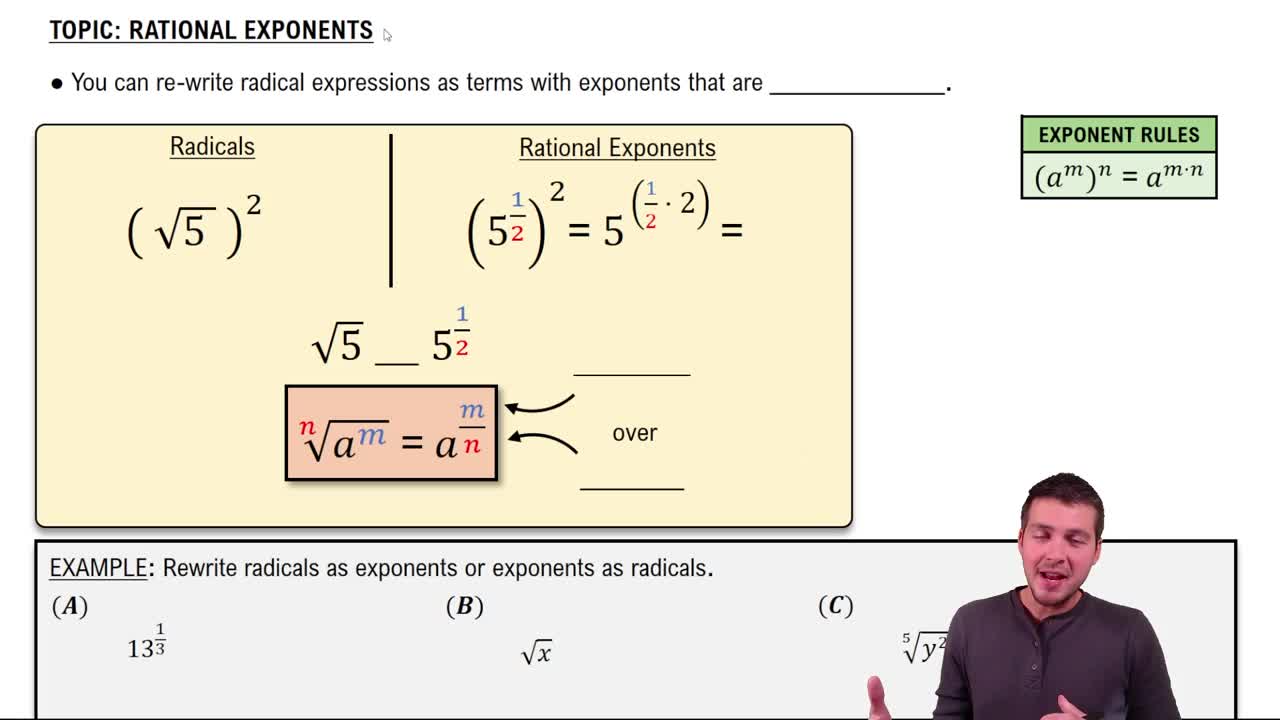Table of contents
- 0. Review of Algebra4h 16m
- 1. Equations & Inequalities3h 18m
- 2. Graphs of Equations43m
- 3. Functions2h 17m
- 4. Polynomial Functions1h 44m
- 5. Rational Functions1h 23m
- 6. Exponential & Logarithmic Functions2h 28m
- 7. Systems of Equations & Matrices4h 6m
- 8. Conic Sections2h 23m
- 9. Sequences, Series, & Induction1h 19m
- 10. Combinatorics & Probability1h 45m
4. Polynomial Functions
Dividing Polynomials
Problem 45
Textbook Question
Solve the equation 12x^3+16x^2−5x−3=0 given that -3/2 is a root.
 Verified step by step guidance
Verified step by step guidance1
Step 1: Confirm that -3/2 is a root of the equation by substituting -3/2 for x in the equation. If the left-hand side equals the right-hand side after substitution, then -3/2 is indeed a root.
Step 2: Use polynomial division or synthetic division to divide the polynomial 12x^3+16x^2−5x−3 by (x + 3/2). This will give you a quadratic equation.
Step 3: Set the quadratic equation obtained in step 2 equal to zero and solve for x. You can use the quadratic formula, factoring, or completing the square to solve the quadratic equation.
Step 4: The solutions to the quadratic equation are the other two roots of the original cubic equation.
Step 5: Combine the root -3/2 with the roots obtained from the quadratic equation to get all the roots of the original cubic equation.
Recommended similar problem, with video answer:
 Verified Solution
Verified SolutionThis video solution was recommended by our tutors as helpful for the problem above
Video duration:
5mPlay a video:
Was this helpful?
Key Concepts
Here are the essential concepts you must grasp in order to answer the question correctly.
Polynomial Equations
A polynomial equation is an expression set equal to zero, involving variables raised to whole number powers. In this case, the equation 12x^3 + 16x^2 - 5x - 3 = 0 is a cubic polynomial, which can have up to three real roots. Understanding the structure of polynomial equations is essential for solving them.
Recommended video:
Guided course

Introduction to Polynomials
Rational Root Theorem
The Rational Root Theorem provides a method for identifying possible rational roots of a polynomial equation. It states that any rational solution, expressed as a fraction p/q, must have p as a factor of the constant term and q as a factor of the leading coefficient. This theorem is useful for verifying given roots, such as -3/2 in this problem.
Recommended video:
Guided course

Rational Exponents
Synthetic Division
Synthetic division is a simplified form of polynomial long division used to divide a polynomial by a linear factor. It allows for efficient calculation of the quotient and remainder when a polynomial is divided by a binomial of the form (x - r). In this case, synthetic division can be applied to factor the polynomial after confirming -3/2 as a root.
Recommended video:

Higher Powers of i
Related Practice
